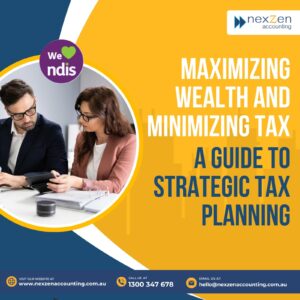Salary sacrifice is a confusing term and sometimes a confusing arrangement. If you’re wondering how to navigate a salary sacrifice agreement as an employer, you’re in luck. This guide helps walk you through the ins and outs of salary sacrifice, including a simple definition, how to set up a salary sacrifice agreement, and the pros and cons of salary packaging.
What is a salary sacrifice?
A salary sacrifice agreement allows an employer and employee to negotiate a salary package (aka total remuneration package). In this agreement, the employee agrees to “sacrifice” their future salary or wages, and the employer agrees to other benefits of similar value instead. It’s really more of a trade or exchange rather than a “sacrifice.”
A salary sacrifice agreement is also commonly referred to as “salary packaging” or “total remuneration packaging”, which are perhaps more accurate terms. These arrangements aim to find a salary and benefits package that benefits both the employer and employee in terms of financial remuneration and tax benefits. Employers also use salary sacrifice arrangements as incentives for new and existing employees. There are tax implications and expenses to consider, though, which we’ll cover in more detail throughout this guide.
Which benefits can you exchange in a salary sacrifice?
The employer ultimately decides which benefits to offer in a salary sacrifice agreement, though the final arrangement requires both parties to agree. The ATO doesn’t restrict the benefits you exchange. When you’re setting up salary sacrifice agreements, there are three financial considerations: the cost of the benefits, the administrative expenses, and your tax obligations.
- Fringe benefits: Fringe benefits include payments outside of standard salary and wages. Fringe benefits are generally for private use and unrelated to work. For example, if you allow an employee to use a company vehicle for their own private purposes, that is a fringe benefit. Other examples include reimbursement for expenses like tuition or childcare, gym memberships, and entertainment (e.g. concert tickets). Employers are required to pay Fringe Benefits Tax (FBT). It’s important to consider this expense when you’re negotiating a salary sacrifice arrangement.
- Exempt benefits: Exempt benefits aren’t subject to FBT. Only work-related items are considered exempt benefits. The following items are allowed for exemption, and the item must primarily be used for work-related purposes: portable electronic devices, computer software, protective clothing, briefcases, and tools of trade. If the employee uses more than one item for a “substantially identical function” within an FBT year, only one of the items is exempt. The only exceptions are for replacement items and specific work-related portable electronic devices for small businesses (those earning less than $50 million per year).
- Superannuation: Superannuation is one of the most popular benefits in a salary sacrifice agreement. The ATO states that employer contributions aren’t fringe benefits as long as they’re made on behalf of the employee and are paid to a complying super fund. However, if the contributions are made on behalf of another person (e.g. the employee’s spouse), or you pay them to a non-complying super fund, the ATO considers them fringe benefits. In that case, you’ll need to pay FBT.
Is there a limit on salary sacrifices?
However, their reduced salary or wages must at least equal minimum wage. If the salary sacrifice includes superannuation contributions, those contributions are subject to a cap because they’re considered concessional contributions. This cap applies to all super fund concessional contributions made for one employee throughout the year.
How to Set Up a Salary Sacrifice Agreement
Like most agreements, you should create a written contract for your salary sacrifice agreement. A verbal contract may also be legally binding, but these agreements are much more difficult to prove and possibly open for dispute.
You should agree on terms and sign the contract (both you and the employee) before work commences. The ATO doesn’t allow employees to sacrifice any salary or wages, leave entitlements, bonuses, or commissions that have already accrued. You may renegotiate the terms of the salary sacrifice agreement at any time during the person’s employment. If your contract is renewable, you should renegotiate the terms before each renewal starts.
Tax Implications of Salary Sacrifice Arrangements
There are specific tax guidelines related to salary sacrifice arrangements. Here are the details as outlined by the ATO:
- The employee pays income tax on their reduced salary or wages.
- The employer pays applicable fringe benefits tax (FBT) on any fringe benefits exchanged for salary. There are two exceptions here:
- Exempt benefits (listed above) aren’t considered fringe benefits.
- If an employee could claim an income tax deduction for an item, the employer isn’t required to pay FBT on that item under the “otherwise deductible” rule.
There are two notes to mention about superannuation contributions.
If the employer makes super contributions as part of a salary sacrifice agreement, those contributions are considered employer contributions (not employee contributions) as long as they are made on behalf of the employee (not their spouse or another person) and are paid to a complying fund. These contributions will be taxed in the super fund because they’re considered concessional contributions.
Per the ATO, as of 1 January 2020, these contributions don’t:
- Reduce the ordinary time earnings that the employer is required to calculate their employee’s super entitlement on.
- Count towards the amount of super guarantee contributions that the employer is required to make in order for them to avoid the super guarantee charge.
Note: If a salary sacrifice arrangement doesn’t meet ATO requirements, the benefits are considered taxable income.
Other Salary Sacrifice Guidelines
The ATO outlines other requirements and procedures for salary sacrifice, including:
- The employee must permanently forego the sacrificed salary for the entire period outlined in your arrangement.
- If you, as the employer, don’t provide a fringe benefit outlined in the agreement, you must cash out that benefit by the end of the agreed period. This payment is considered normal taxable income.
- If the employer makes payments to a third party from your earned salary, these are not part of an effective salary sacrifice arrangement. These payments must be after-tax. Common examples include payments for health insurance premiums or loan repayments.
Pros and Cons of Salary Sacrifice Agreements
There are many pros and cons for employers to consider in regards to salary sacrifice agreements.
Pros:
- Salary packaging is an excellent incentive for new and existing employees. If you need to attract talent, salary sacrifice agreements are a great way to do so—as long as you understand the financial implications, too.
- Many employees effectively earn more money with a salary sacrifice agreement; if done well, the employer won’t experience any additional cost.
- Employers may save money on payroll taxes, workers compensation, and superannuation guarantee charges.
Cons:
- Salary packaging is a complex task and requires a great deal of time and effort to negotiate and communicate.
- If and when an employee leaves the organisation, it can be challenging to reconcile the outstanding wages or benefits owed under a salary sacrifice agreement.
- Record keeping is more complicated than usual.
- FBT requires additional time and expense.
Should you offer salary sacrifice arrangements?
There’s a lot to consider with salary sacrifice arrangements. While employers sometimes save a bit of money by packaging salaries, employees experience the greatest benefits. Most employees save money on taxes and take home more money overall with these agreements. Because salary sacrifice agreements offer so many financial benefits for employees, an employer who offers these agreements is much more appealing. The greatest challenge, of course, is setting up a salary sacrifice arrangement and keeping accurate records for tax purposes. If you need help, nexZen is here. We can work together to find a salary sacrifice arrangement that benefits both you and your employees. Book a discovery call now to get started.










